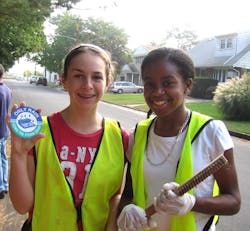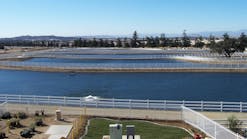das Manufacturing Inc.
www.dasmanufacturing.com • 800.549.6024
Much of the pollution in our nation’s waterways comes from everyday materials like fertilizers, pesticides, motor oil and household chemicals. Rainwater washes these substances from streets, yards and driveways into storm drains.
Studies have shown that a majority of the public believe that the drains lead to wastewater treatment plants, when in fact, this “non-point” pollution is carried directly to the nearest waterway. For this reason, educating the public about pollutants contained within storm water runoff is a vital task.
As a result, communities are organizing to place messages on storm drain inlets. Typically, markers with a “No Dumping” message are affixed directly on the inlet.
The Delaware Department of Natural Resources and Environmental Control piloted such a program. Beth Krumrine of the DNREC writes, “We felt that this would be an effective and interactive approach to educating volunteers about issues related to polluted storm water runoff, while creating awareness among the general public.”
The first step was to create a work group comprised of interested agencies and stakeholders that would contribute to the process, from technical knowledge to outreach and education. After laying the ground work for the program and obtaining funding, the next step was to choose the type of marker that would be used by the volunteers.
After evaluating different products, markers from das Manufacturing were chosen for their “volunteer-friendly” marking system. Although the company offers a variety of markers including plastic composites and metals, they selected stock plastic markers that were imprinted on the back with installation instructions. The markers were also ADA compliant for slip-resistance. For installation, the company supplied small, re-sealable squeeze tubes of adhesive that were easy to use without requiring caulk guns. Although there are different methods of marking and developing a marking program, much can be learned from programs already in place.






